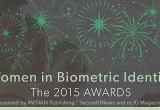Biometric exits, visa overstays are hot topics for Dept. of Homeland Security
02 October, 2013
category: Biometrics, Government
Border control is an all too familiar and vital focus of U.S. national security and the time has come again for the U.S. Department of Homeland Security (DHS) to consider the implementation of biometric exits at air and seaports.
Last week, Representative Candice Miller (R-MI) along with Representative Loretta Sanchez (D.-Calif.), a senior member on the House Committee on Homeland Security and former chairwoman of the Subcommittee on Border and Maritime Security, introduced the Biometric Exit Improvement Act of 2013, otherwise known as H.R. 3141.
Following a written testimony from the U.S. Customs and Border Protection and U.S. Immigration and Customs Enforcement entitled “Fulfilling A Key 9/11 Commission Recommendation: Implementing Biometric Exit,” the need for a comprehensive exit system has once again been raised. DHS officials lays out what developments that have been made to this point and the enhancements that are planned for the future.
To Homeland Security’s credit, progress has been made over the last ten years, from a time when screening of passengers entering the United States fell to the Department of State’s visa process. At that time, there was no biometric collection for individuals seeking admission to the United States or for visa applicants beyond the taking of a photograph.
In the time since, the DHS maintains that it has adapted and enhanced its ability to detect threats as early as possible. Those intending to travel to the United States under the Visa Waiver Program must now acquire authorization from the Electronic System for Travel Authorization program prior to boarding an airplane or ship traveling to the United States. The system checks passengers against a number of government databases and has digitized arrival/departure records (Form I 94W) for authorized travelers from other participating visa waiver countries.
Under the Secure Flight program, all passengers seeking to fly to, from, or within the United States are screened in a similar manner prior to boarding an aircraft. For non-citizens, passengers’ biometric data are collected and checked against terrorist watch lists prior to being issued a visa or being permitted entrance to the United States, with participating agencies sharing data of known or suspected terrorists with one other.
Part and parcel to biometric exits is another heavily debated issue, visa overstays. The federal government has long tried to effectively and efficiently log accurate and timely data on those who overstay their period of admission in the United States. In response to this desire, Congress enacted legislation at the suggestion of the 9/11 Commission to institute a biometric entry/exit system to better achieve that goal.
According to a July U.S. Government Accountability Office report, however, there are currently more than 1 million unmatched arrival records, a figure that suggests the DHS has no knowledge whether or not foreign visitors ever left the country. The H.R. 3141 bill, then, mandates the creation and implementation of a biometric exit system to track if and when a foreign visitor exits the country.
“We’ve known for a long time that visa overstays make up a large portion of illegal immigration – up to 40% – but the DHS has yet to implement a working biometric exit system,” says Rep. Sanchez. “It is impossible to secure our borders and keep our country safe if we’re only addressing half of the problem. Our bill’s concrete requirements will finally get a comprehensive biometric exit program off the ground.”
The Biometric Exit Improvement Act of 2013 (H.R. 3141) includes the following provisions:
- Requires the Secretary of Homeland Security to submit within 180 days a plan to establish a biometric exit data system at ports of entry.
- Requires the Secretary to establish a biometric exit data system, not later than two years after enactment, at the ten U.S. airports and ten U.S. seaports with the highest volume of international travelers.
- The Secretary would be required to establish a six-month pilot program to test a biometric exit system on non-pedestrian outbound traffic at not fewer than three land ports of entry with significant cross-border traffic, including not fewer than two southwest border ports of entry, and at least one northern border port of entry.
- This measure would further expand the biometric exit system to all pedestrians at land ports of entry not later than three years after enactment and would expand biometric exit to all air and seaports not later than five years after the date of enactment.
As far back as 2004, legislation has stipulated that an entry/exit system would require some form of biometric – fingerprint, facial recognition, iris or otherwise – to be collected when foreign nationals enter or leave the United States. As stipulated at the time, the purpose for biometric capture would be to match entry and exit records, discerning those who are complying with their period of admission in the United States from those who aren’t.
It is important to note that the U.S. did not construct its border, aviation, and immigration infrastructure with exit processing in mind, but the DHS has since piloted biometric exit programs in 15 ports of entry in an attempt to develop an effective exit system. According to the written testimony, these biometric exit pilots found that limitations in existing technology along with a lack of infrastructure for departing passengers would require some $3 billion in investments and yield significant disruptions to airlines and their passengers.




